By Brian Jones, Conservation Coordinator, Toliara, Madagascar (All photos courtesy of Brian Jones)
After almost six years of living in remote villages throughout Madagascar, the modern amenities of Toliara, like hot showers and wifi, were a welcome relief when I moved here back in 2012. Since then, in my post as BV’s Conservation Coordinator, I’ve been overseeing a number of our community-based conservation initiatives along Madagascar’s west coast. There are times, however, when I find myself frighteningly close to what could only be described as a *gasp* “desk job”.
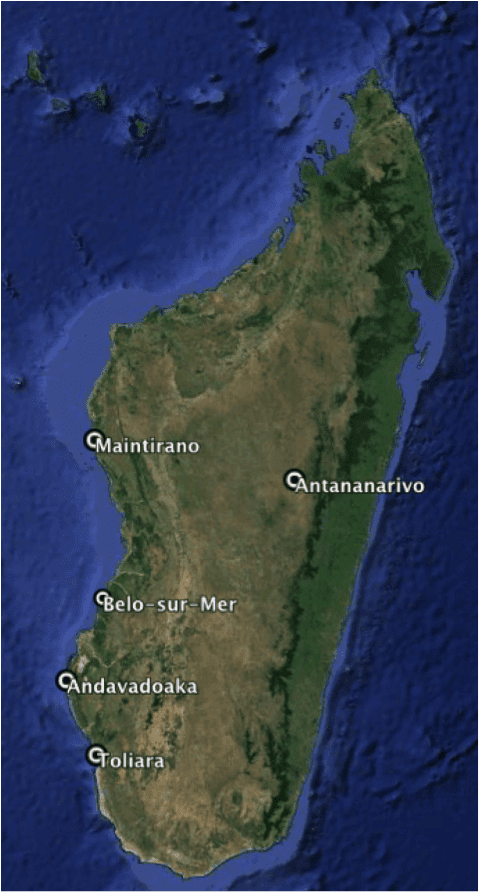 It’s shocking revelations like this that make me jump at the opportunity to visit our field sites, and so, at the beginning of this year, I set out to visit three of our sites in quick succession.
It’s shocking revelations like this that make me jump at the opportunity to visit our field sites, and so, at the beginning of this year, I set out to visit three of our sites in quick succession.
What’s always appealed to me about Blue Ventures is our people-centric style of conservation. Catches are declining all along Madagascar’s west coast, and Vezo fishers are finding it harder and harder to make a living at the only thing they know. I’m no bleeding-heart conservationist. People trump fish or turtles in my book, but without the latter, the former would have a tough time supporting themselves. To me, this is our challenge as a marine conservation organisation: to work with these fishing communities to strike a balance where they can live a decent life without exhausting the sea’s natural bounty.
After a couple of days in the capital city of Antananarivo catching up with Paul, our education programme coordinator, I hopped on an overnight bus headed for the coastal city of Morondava, the stop-over point on my way to Belo sur Mer.
First stop: Belo sur Mer
Belo sur Mer will always hold a special place in my heart. I lived there from 2009 until 2012, and was part of the small team that started Blue Ventures’ field operations there; at the time our second site in Madagascar. One of the members of that original team, Thomas, was taken from us last year, well before his time, but he’s left an indelible mark on the communities with which he worked. Thomas’ charisma and passion was electric, as I described here a few years ago, and he quickly became a household name wherever he went. Nowhere is that more true than in Belo sur Mer, where he was instrumental in setting up the first temporary mangrove reserves back in 2010.

Thomas in his element, leading a Q&A session at a turtle festival in Belo sur Mer. You are dearly missed.
Our work in Belo has progressed quite a bit since those early days, thanks to the hard work of our small team and the fishing communities we partner with. From an initial three trial mangrove reserves in 2010, we have expanded to work in eight villages, and continue to receive requests for support in setting up reserves in additional villages. It’s not always easy going, and communities continue to struggle to enforce their reserves against opportunistic outsiders, but progress is evident and the fishers remain motivated.
In keeping with our integrated Population-Health-Environment (PHE) approach, featured in the new film “The Freedom to Choose”, our programme portfolio has also expanded considerably. 2013 saw the replication of our Safidy community health work in Belo, as well as the trial of sea cucumber and seaweed aquaculture.
Though my visit to Belo was brief this time, it was good to reconnect with the team and the friends I made in the village that quickly became a second home to me.
Second stop: Maintirano and the Barren Isles
Belo was not actually my first assignment with Blue Ventures back in 2009; before travelling to Belo I spent about three weeks in Maintirano and on the Barren Isles, helping out with a feasibility study that we were conducting, looking into establishing a marine protected area (MPA) there.

The moon out over our camp on Nosy Manandra
What we found in those initial dives back in 2009 was nothing short of mind-blowing. I’ve never seen coral reefs so healthy and teeming with fish. In fact, these reefs have the highest resident fish biomass recorded in Madagascar to date. One look at the degraded state of resources further down the coast, and the need for conservation of these reefs and the fisheries they support becomes starkly evident.
We’ve had a team based in Maintirano since 2011, setting up monitoring programmes for traditional fisheries, nesting populations of sea turtles, and the health of the coral reefs. We’ve also made significant progress towards the creation of an MPA covering the Barren Isles, with an official request for a two-year temporary protected status being submitted to Madagascar’s Ministry of Environment and Forests this January.
My visit in February was for the passing of the torch from our outgoing Barren Isles coordinator, Olivier Raynaud, to his replacement, Florence Pichon. Olivier has displayed a super-human work ethic over the past two years, and will be taking a much needed rest, filling up on cheese and good wine back at home in the foothills of the French Alps.
After a few days of courtesy visits in town, we loaded up the pirogue and headed out for the nearest island, Nosy Marify, a sandbank approximately 15 kilometres off-shore.
I met Zafilahy the next day on Nosy Manandra, another sandbank approximately 15 kilometres south of Nosy Marify. Zafilahy was built like a linebacker and a bit intimidating at first glance, but his broad smile and infectious laugh betrayed his true kind-heartedness. After bartering some cigarettes (some of Olivier’s cigarettes, if we must split hairs) for an octopus he had just caught, we sat chatting in the tiny square of shade cast from the sail that we had rigged to a few pieces of wood. His tough exterior melted away within minutes, opening up to me that he’d been told that his growth was stunted due to chronic illness during his childhood. He reconciled this by boasting that his shins are hard as steel, a distinct advantage when playing soccer. I offered that it could be worse, he could have the scourge of skin that turns red and painful after an hour in the sun.
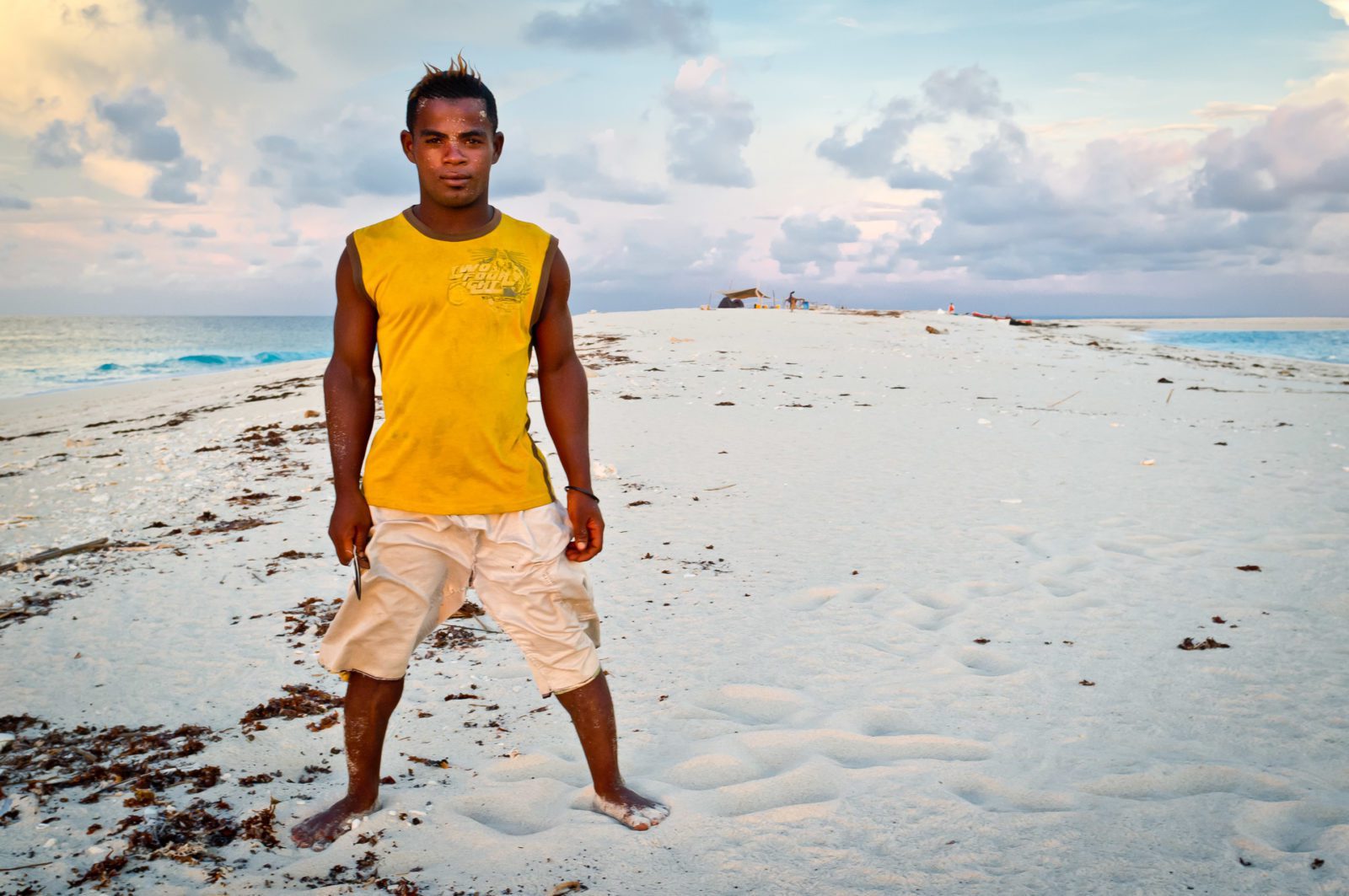
Zafilahy, sea cucumber diver, on Nosy Manandra
Zafilahy was one of only three fishers on Nosy Manandra when we arrived, as most people stay near the coast during the annual cyclone season, when the weather can change at the drop of a hat. Not everyone has the luxury of a pirogue with an outboard motor strapped to the back like we do. He hadn’t planned this trip, but needed some quick cash, and decided to try his luck at free-diving for sea cucumbers. He needed the cash to replace a fishing net he’d borrowed from his mother-in-law, and subsequently damaged. She was threatening to take him to court if he didn’t replace the net (a value of about $35 USD). I suppose that some customs transcend culture and geography.
“Life is tough,” Zafilahy says matter-of-factly, “I can’t afford to buy my own pirogue or net, so I have to borrow from people or join groups when they go fishing. Last year, when there was bad weather, my wife and I had very little to eat for four days. We’d just sit there and look at each other. Hungry.” He’s not looking for pity or a hand-out with this, just describing life as he knows it.
“I’m still learning how to really dive. I can only make it down to 12 chest-lengths (~18 meters). My little brother can get to 16 (~24 meters), but sometimes when he comes back up he gets dizzy and faints.”
Not long ago, a haul of valuable sea cucumbers would have been a sure thing around the Barren Isles, but over the past decade, teams using scuba equipment, financed by Chinese buyers, have picked the shallow reefs clean. The practice is illegal, but enforcement out here is thin, so they operate with almost complete impunity. The upshot is that guys like Zafilahy now have to push themselves to their absolute physical limits to try to find some of the few remaining sea cucumbers. Sometimes with disastrous consequences.
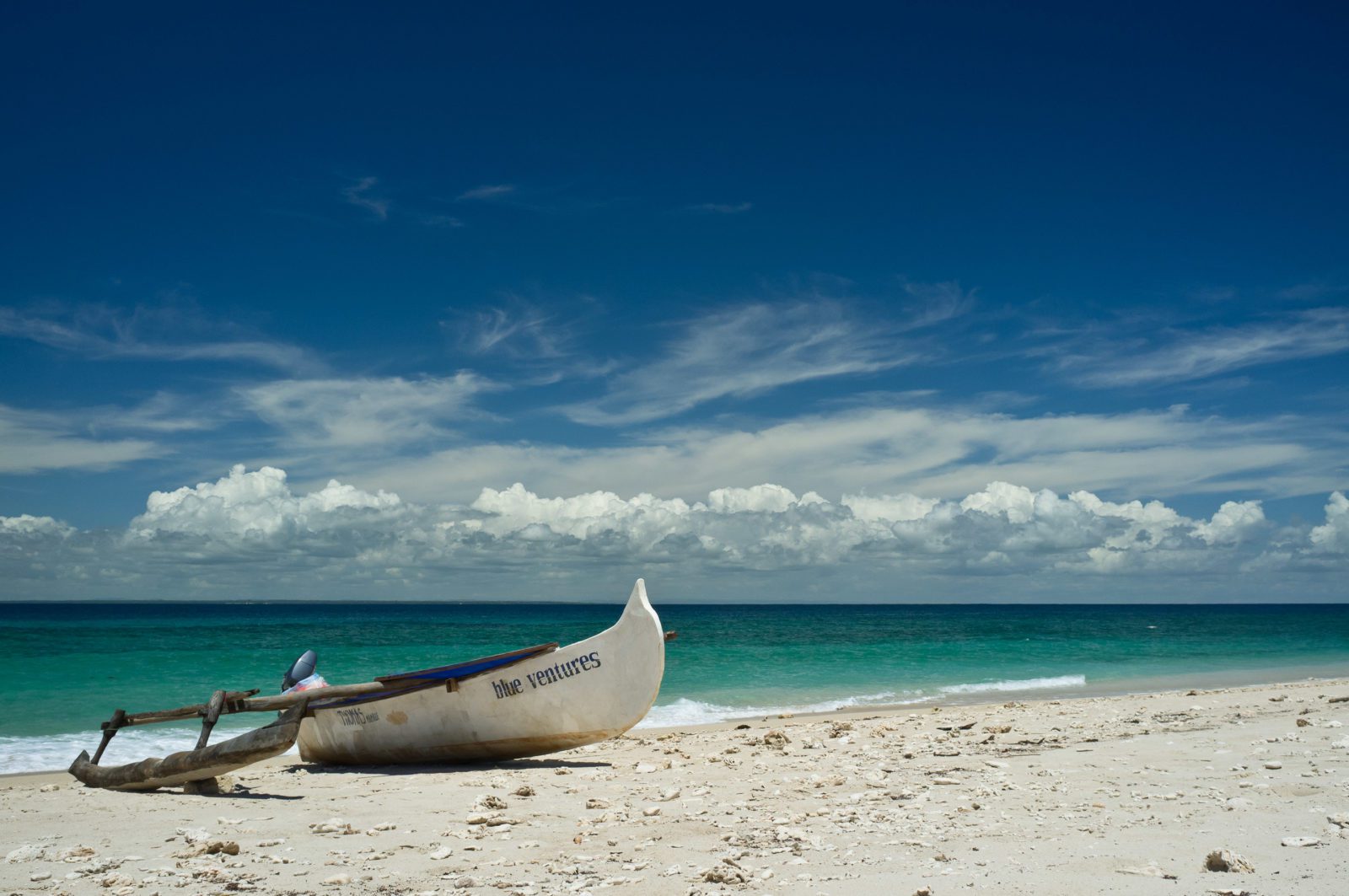
Our chariot, parked on Nosy Marify
As I settled down for the night in our make-shift tent made out of a sail, Zafilahy and his friends headed out to sea, guided by the moonlight and armed with cheap flashlights with condoms pulled over them to make them temporarily waterproof. They will push their bodies to the brink and, if they’re lucky, bring home $20 for their efforts.
It’s when speaking with guys like Zafilahy that I’m truly humbled and reflect upon how unbelievably fortunate I am to have been born into a life of relative privilege. I doubt there are many westerners working in conservation or development who have ever had to risk their life to put food on the table. It is imperative that those of us working in the conservation field remember that our actions can have direct consequences, intended or not, on the ability of people like Zafilahy to provide for themselves.
Last stop: Andavadoaka
Arriving back in Toliara for an evening, sunburn from the Barren Isles still peeling, I had roughly enough time to unpack my dirty clothes, re-pack some fresh ones, and grab seven hours of sleep before it was time for another early morning start, heading to Andavadoaka for the Velondriake Association’s general assembly meeting. The forecast says a cyclone is on its way, and we’re tempted to delay the meeting, but decide to call its bluff. We’re lucky and the cyclone hooks west, doing nothing more than kicking up some violent waves and spitting rain on us for two days.
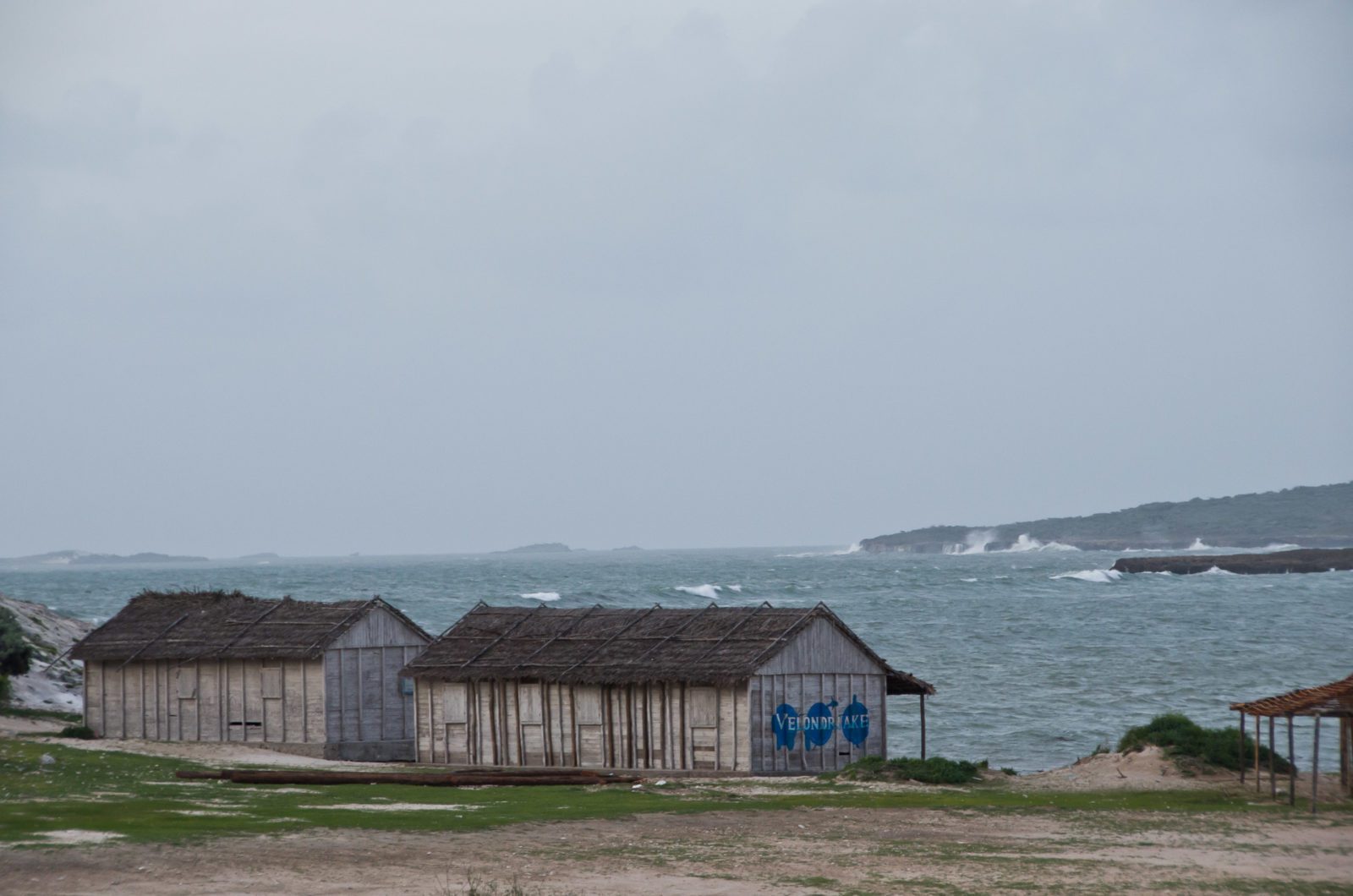
Waves crash on the shore by Andavadoaka, whipped up by a cyclone passing through the Mozambique Channel
Andavadoaka was where it all started for Blue Ventures ten years ago, and where we still maintain our biggest field team and run our volunteer expeditions. It’s been a testing ground of sorts, where we’ve developed award-winning programmes like our Safidy community health initiative, and piloted early trials of community-based aquaculture.

A Velondriake Association member / village president takes notes during the general assembly
The Velondriake Association is now working to develop their own capacity and operate more autonomously from Blue Ventures. At this particular general assembly, representatives from all 24 villages discussed, among other topics, an innovative fisher contribution system that they’ve been trialling on octopus reserve opening days, through which fishers make a small contribution to the Association for each kilogram of octopus they catch. The idea is simple, but, as always, the devil is in the detail, and the Association members discussed strategies for how to most effectively engage with commercial seafood buyers to implement this system.
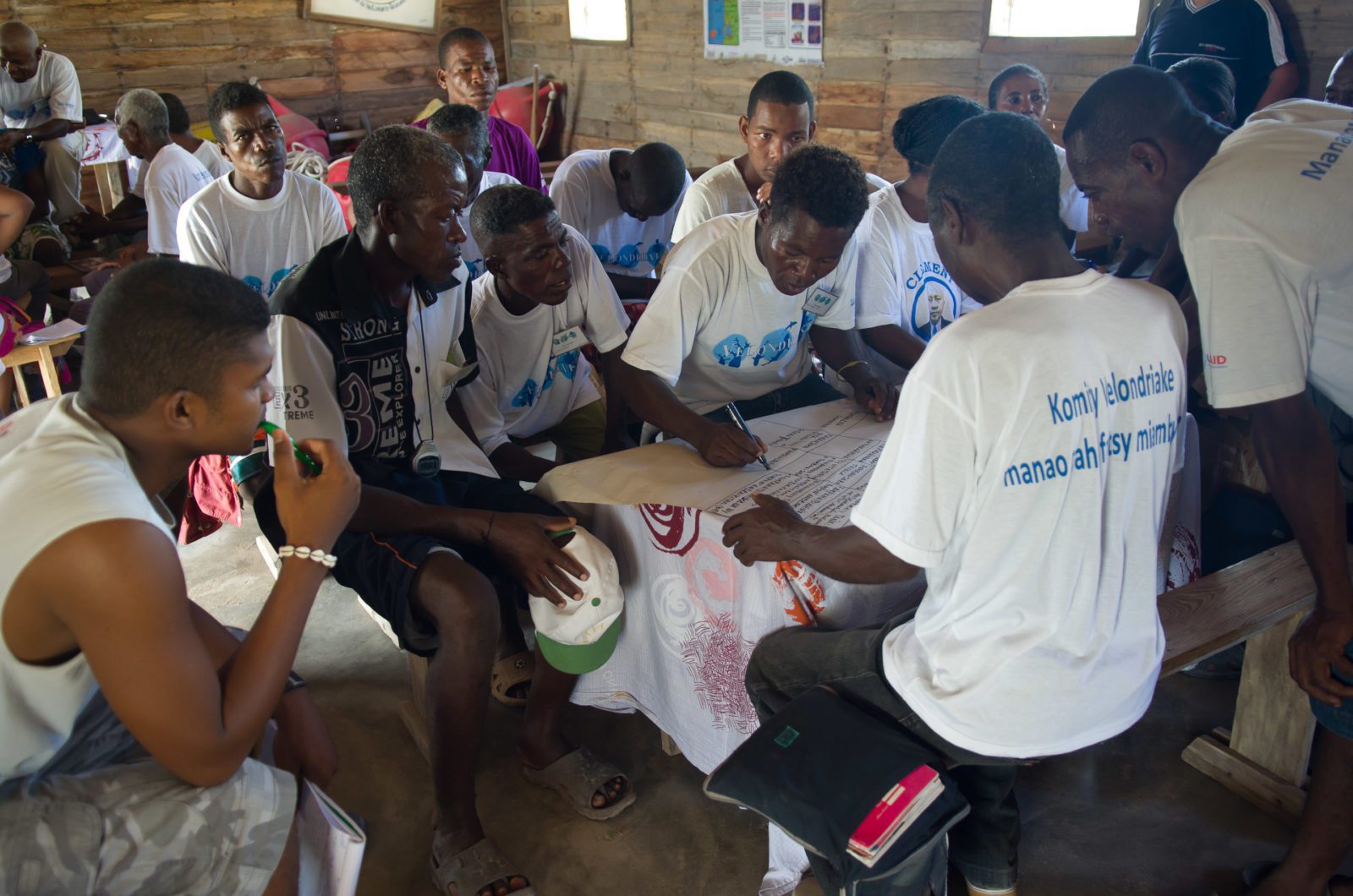
Members of the Velondriake Association evaluate progress towards the previous year’s objectives
There’s no place like home
Following the two-day general assembly, we head for Toliara the next morning, and I’m more than a little relieved at the prospect of spending a few nights in my own bed.
It’s been a paradoxically exhausting yet invigorating month travelling around Madagascar, reconnecting with our field teams and talking with traditional Malagasy fishers of every stripe. The challenges we face are daunting: industrial and illegal artisanal fisheries, destructive fishing, a rapidly growing population, and, of course, the potential impacts of climate change. It can be hard to remain optimistic in the face of all of this, but for the communities we work with, there are few alternatives to fishing. We must push forward and continue trying to find workable solutions to these challenges.
I write this from the comfort of the aforementioned desk in Toliara (so despised a month ago, yet now oddly welcoming), knowing that this respite will be brief; just long enough to recharge on ice cream and hot showers before hitting the road again. Next stop: Diego Suarez for Madagascar’s second national LMMA forum where we’ll be working with partners like Conservation International, WWF, the Wildlife Conservation Society and a host of others to bring together local managers from all across Madagascar to share their experiences. Watch this space!

